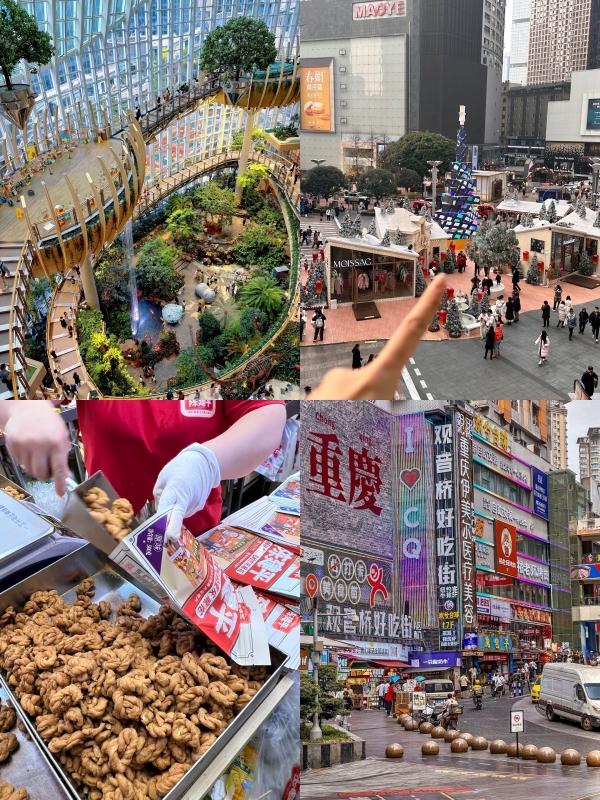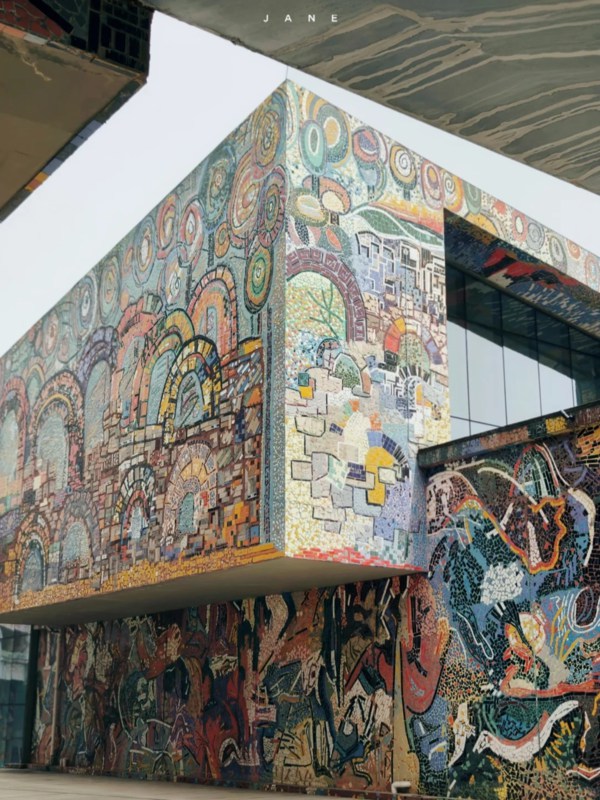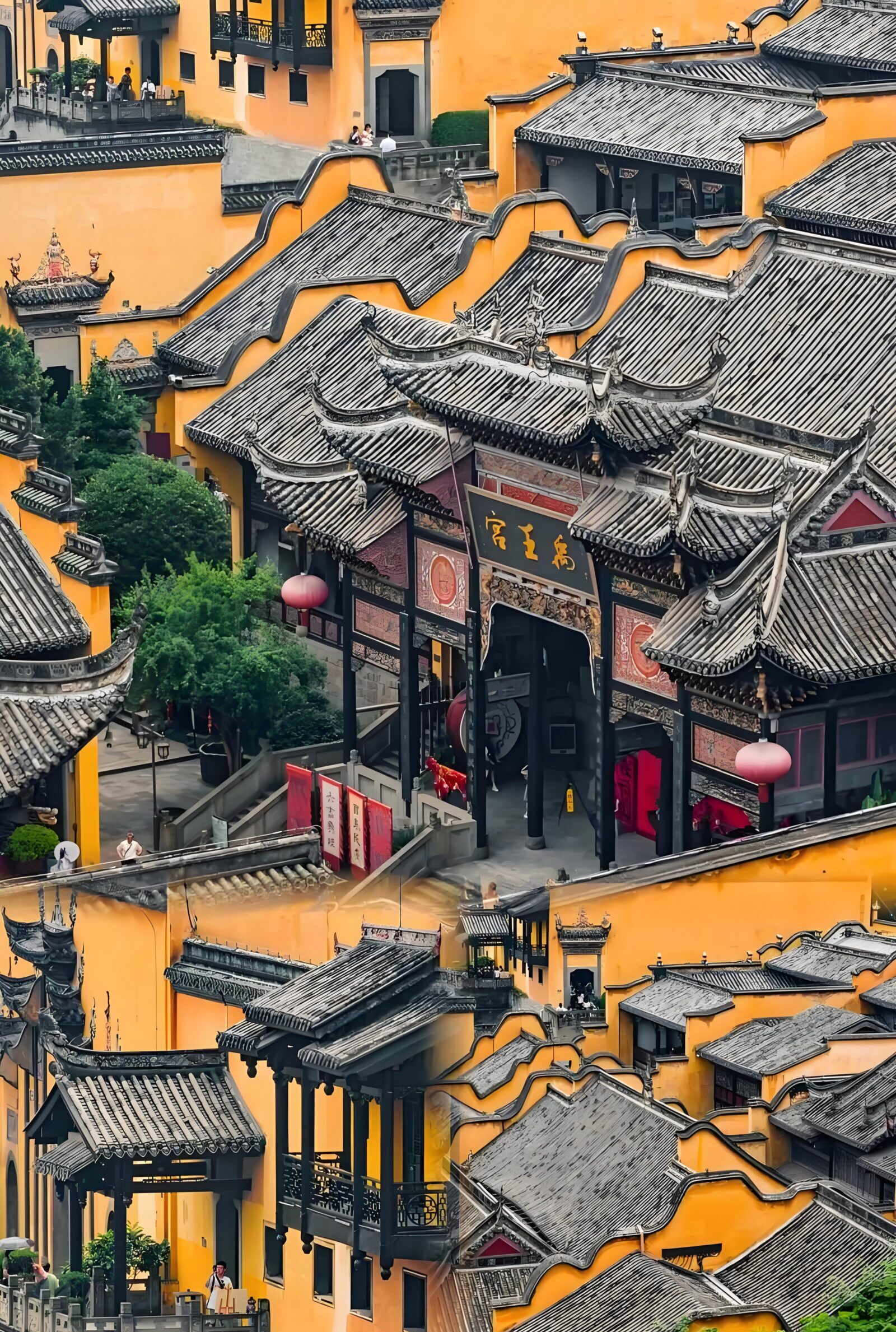There’s a moment, standing by the river, when Chongqing Hongyadong looks almost unreal. The wooden stilt houses cling to the cliff, layer upon layer, and as night falls, thousands of lights flicker on like someone flipped a giant switch. You catch the scent of sizzling skewers, hear a street performer’s erhu drifting over the crowd, and wonder if you’ve stepped into a movie scene.Welcome to Chongqing Hongyadong, the heart of the city you never knew you were missing!
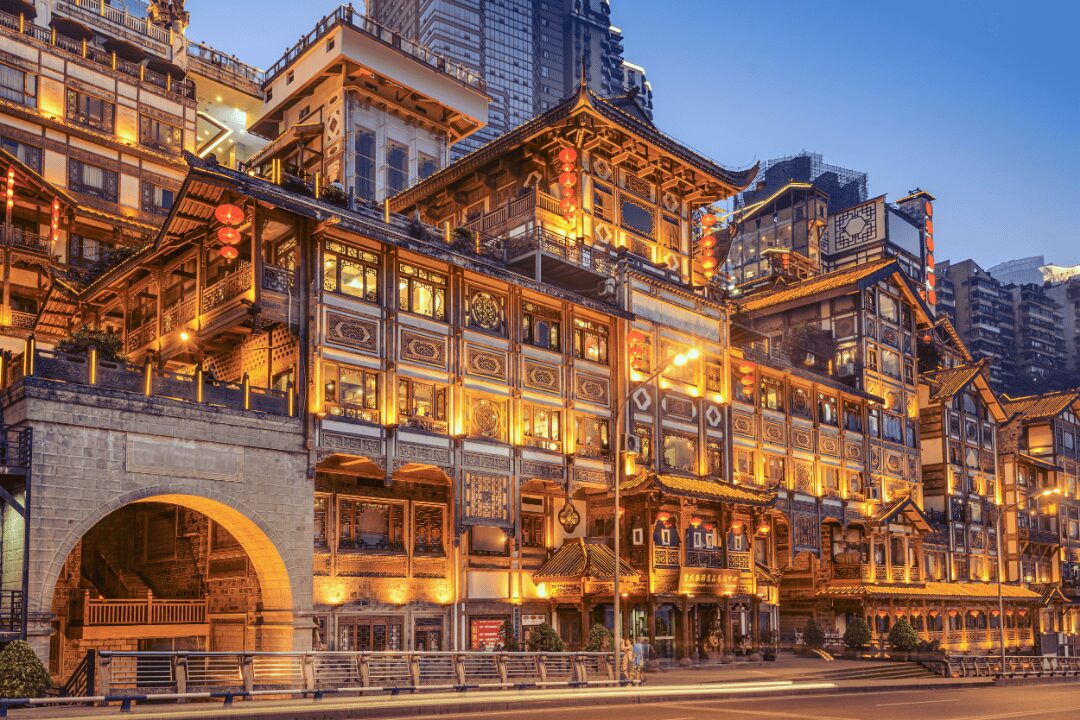
Hongyadong
Why Chongqing Hongyadong Captures Every Traveler’s Heart
At first glance, the stilted houses seem to float above the rivers. They grip the cliff as if holding on for centuries. In fact, locals call them Diaojiaolou, and they were built for survival, not decoration. They keep the damp air out, stop insects, and once even kept thieves away.
Meanwhile, the location itself is dramatic. Hongyadong sits right where the Yangtze meets the Jialing River. This crossing shaped trade, culture, and the way people lived here. Someone once said it feels like “a city stacked on a cliff, lit from within.” You can see why—especially after dark, when lights spill across the water.
The history runs deep. For over 2,300 years, this spot shifted roles. First, it was a Ba Kingdom fortress guarding the rivers. Later, it became the Republic-era “Little Hong Kong”, full of merchants and narrow lanes buzzing with deals. Today, after its 2013 revival, it’s a modern maze of food stalls, bars, and folk art. Still, it holds the soul of old Chongqing.
Standing here, you hear the water rushing below and the low hum of the city above. The mix feels alive. And even with the crowds, you might catch yourself thinking you’ll come back—because places like this tend to stay with you.
Must-See Highlights Inside Chongqing Hongyadong
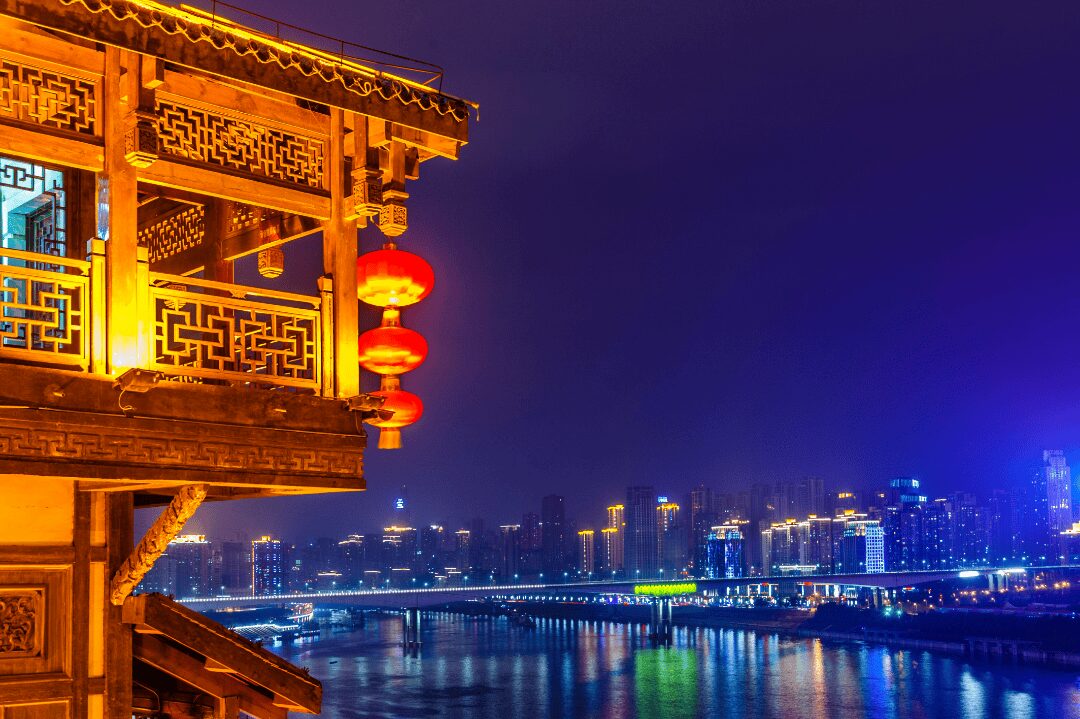
Night River View of Hongyadong
Level 1:Walking into Chongqing Hongyadong feels like stepping into a layered world. First stop, head down to Level 1. The riverside air is damp but fresh, and you can hear the Yangtze and Jialing murmuring together. Street vendors line the Binjiang Pedestrian Street, waving ladles over steaming pots. There’s a man carving your name into a bamboo keychain, and next to him, a woman selling spicy grilled squid on sticks. Someone said they stayed here almost an hour, just nibbling skewers and watching a street performer play the erhu. I kind of get it—you lose track of time in moments like this.
Level 4:Meanwhile, Level 4 pulls you in with its smells alone. This is the Feast Food Street, and it’s unapologetically loud. Hotpot steam clouds the air, waiters shout over the din, and menus are splashed with red chili icons. You’ll find Chongqing hotpot, chuanchuan skewers, and bowls of mao xue wang so red you hesitate. If you can’t handle too much heat, ask for wei la—mild spice. It’s still spicy enough to make your lips tingle, but at least you won’t be crying over your noodles. Eating here in Chongqing Hongyadong isn’t just about the food—it’s about surviving the spice and joining the chaos.
Level 9:Level 9 is a slower breath. This floor hosts the Memory of Mountain City brass sculpture, a piece so detailed you’ll notice something new each time you look. Around it, folk art stalls sell hand-painted fans and embroidered coin purses. There’s an old craftsman explaining his woodblock printing technique to a small group; you lean in and catch a faint smell of varnish. In Chongqing Hongyadong, this is where you feel the weight of the city’s past pressed into art.
Level 11:Level 11 takes you to the rooftop, the Jialing Sunset deck. The view spills wide—the bridges, the skyline, the water turning gold. As the sun drops, lights blink on across Chongqing Hongyadong, and the cliffside seems to glow from the inside. People say the best photos are from across the river, but honestly, standing here in the warm wind feels better than any picture. You leave only when the last bit of orange slips behind the hills, and even then, you glance back—because places like this don’t fade easily.
Getting to Chongqing Hongyadong
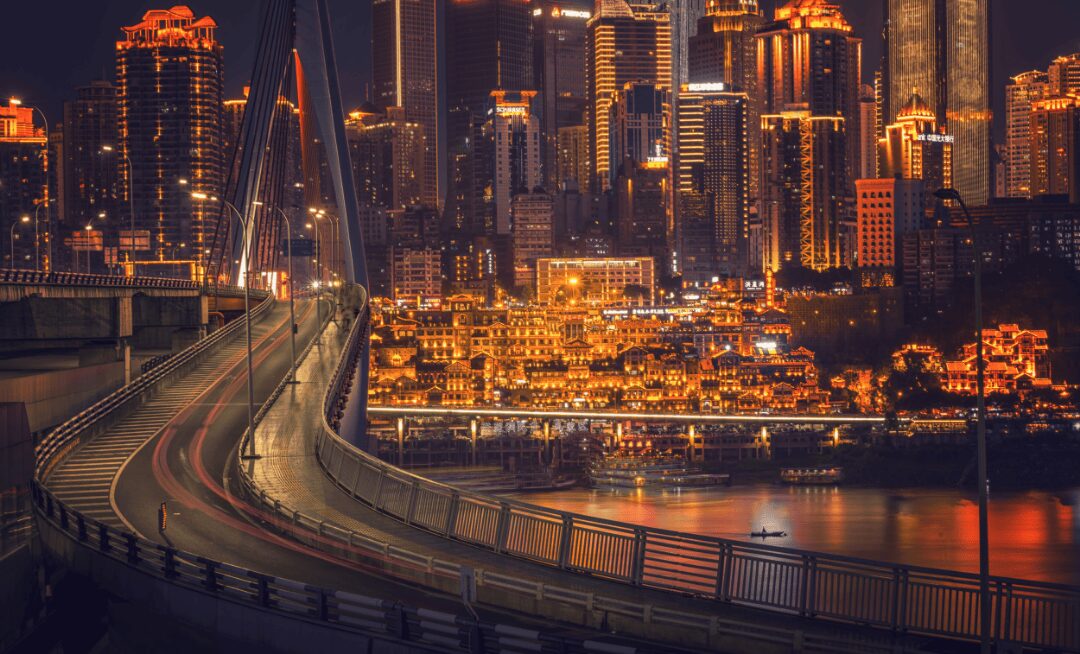
Chongqing at Night
By Flight
Flying into Chongqing Jiangbei International Airport? The easiest way to reach Chongqing Hongyadong is to hop on Metro Line 10, switch to Line 2, and ride to Linjiangmen Station. From there, it’s roughly a 12‑minute downhill walk—yes, downhill first, uphill later. Someone mentioned they" could already see the river lights from halfway down", which made them slow their pace just to take it in.
If you’re flying into Wushan Airport in Chongqing , keep in mind it’s quite far from the city center—over 300 kilometers away.So while it’s an option on the map, you’ll want to choose Chongqing Jiangbei International Airport instead if your goal is Chongqing Hongyadong.
By Train
If you’re arriving at Chongqing North Railway Station, the route is much the same: Metro Line 10 to Line 2, get off at Linjiangmen. Coming from Chongqing West Railway Station? Take Line 5, change to Line 1, and hop out at Xiaoshizi Station. It’s about a 16‑minute walk from there. And trust me, these “short walks” in Chongqing feel longer—the city likes its stairs.
By Metro
Most visitors agree the metro is the least stressful way. Lines 1, 2, or 6 will get you close, either to Linjiangmen or Xiaoshizi. Both stations drop you within 15 minutes of Chongqing Hongyadong. Evening rides can be packed, but at least you won’t be stuck in traffic staring at brake lights.
By Bus
Plenty of buses swing by the area—111, 151, 181, 262, 466, 881, 866. Or if you like the touristy option, there’s the city sightseeing bus t480 straight to Jiabin Road Hongya Cave stop. Someone joked that "buses in Chongqing are 'slow cable cars,'”" but they do give you street‑level views before you dive into the crowds.
By Taxi / Car
Technically, you can get to Chongqing Hongyadong from anywhere in the city by car. But here’s the thing: Chongqing traffic has a reputation. One traveler said it took them longer to crawl through the last two blocks than the entire metro ride from their hotel. Unless you’ve got luggage or it’s pouring rain, public transport usually wins.
Planning Your Chongqing Hongyadong Visit
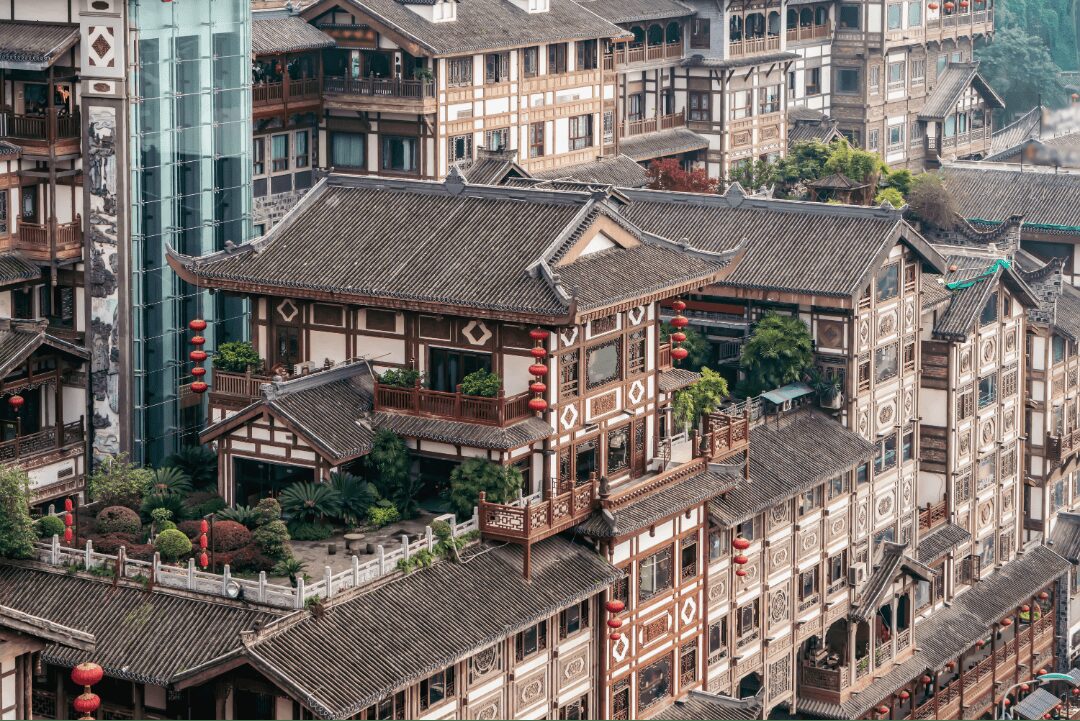
Hongyadong by Day
If you want Chongqing Hongyadong to leave a good memory instead of just a blur of crowds, timing matters. Spring and autumn are easiest on the body—cooler air, softer light, and fewer people pushing past you. Someone told me they came in late March, grabbed a seat by the river with a takeaway hotpot, and ended up staying until the lights blinked on. Winter has its charm too, with hot snacks warming your hands, but summer… well, brace for the heat.
For time, give yourself two to four hours. Less than that and you’ll feel rushed, like flipping through a photo album too fast. You want moments to linger—chatting with a craftsman on Level 9, waiting for just the right sunset glow on Level 11, or ducking into a side alley for a quiet tea. The best evenings start around 5:30 pm so you can catch both daylight and night lights.
As for where to stay, convenience beats fancy. Hotels near Jiefangbei or along the riverside mean you can wander to Chongqing Hongyadong on foot, even pop back late at night if you want a second round of photos. Just double‑check that your hotel accepts foreign guests—most in this area do, but it’s worth confirming before you book. Someone I met ended up switching hotels on arrival because the first one wouldn’t check them in.
And if you prefer a guided day, there are plenty of private tours you can book in Tripadvisor—think 6‑hour custom Chongqing day highlights (around $180), a 10‑hour Wulong National Park trip, or even full‑day “all‑in” packages that bundle multiple attractions. Some travelers go for stylish multi‑stop city tours, while others book luxury options covering all the must‑sees in one go.
Travel Tips for Foreign Visitors
Visiting Chongqing Hongyadong is exciting, but it’s a little easier if you know a few things before diving in. First off—payments. Most stalls and restaurants here take WeChat Pay or Alipay, and yes, you can set them up without a Chinese bank account now. But do it before you arrive. I’ve seen people trying to sign up in the middle of the crowd, juggling luggage and a phone, looking stressed. If you can’t get it working, cash is still fine for most places.
Language isn’t a big barrier if you’re okay with pointing at menus. Many stalls don’t have English signs, but they often have pictures—just smile, point, and maybe learn one or two words like bu la (not spicy) or wei la (mild spicy). Someone told me they “survived three days in Chongqing Hongyadong on ‘wei la’ alone.” Honestly, it works.
Safety and comfort—this place gets really crowded after 7 pm. Keep your bag in front of you and watch your step on the stone stairs; they can be slick after rain. Wear shoes you’d happily walk uphill in. One traveler said their “short stroll” back to the hotel felt like a mini‑hike. And if you’re here for photos, guard your spot—people will casually step into your frame without even noticing.
Lastly, a bit of cultural etiquette goes a long way. Greet stall owners with a simple “ni hao,” and don’t be afraid to ask for recommendations—they usually love sharing their favorites. If you’re taking photos of performers or craft stalls, drop a small tip or buy something. It’s not required, but it’s appreciated, and it turns a transaction into a little connection. In a place as vivid as Chongqing Hongyadong, those small connections might be what you remember most.
Curious about what else Chongqing has to offer besides Hongyadong? Stick around—you won’t want to miss this one!
Chongqing in the rain has its own charm, and this guide shows you how to enjoy it to the fullest.
Frequently Asked Questions (FAQs)
Q: Is Chongqing Hongyadong open 24 hours?
Yes, the area is technically open all day, but most shops, restaurants, and attractions operate between 9 am and 11 pm. The lights that make Hongyadong so famous are switched on from around 7 pm to 11 pm, so that’s when it’s at its most magical. Outside of these hours, you can still walk around, but it’s much quieter and less lively.
Q: Can I see the Hongyadong night view from the river?
Absolutely. Many travelers take a short Yangtze River night cruise to see Hongyadong’s glowing cliffside from the water. It’s one of the best angles for photos, especially with the city’s bridges lit up in the background. Just keep in mind that night cruises can sell out quickly during peak season, so it’s smart to book ahead.
Q: Are there good photo spots that aren’t too crowded?
It’s tricky—Hongyadong is almost always busy. However, if you cross to Qiansimen Bridge or the opposite riverbank, you can get wide shots without jostling for space. Another tip is to visit in the early morning; the lights will be off, but you’ll have the charming architecture almost to yourself.
Q: Can I store luggage near Hongyadong?
Yes, there are a few luggage storage services around Jiefangbei and near the metro stations close to Hongyadong. Some hotels will also hold your bags for a small fee, even if you’re not staying overnight. Just don’t expect large lockers inside Hongyadong itself—it’s best to store bags before you arrive.
Q: Are there vegetarian or vegan options in Hongyadong?
While Chongqing cuisine is famous for its meat-heavy dishes, you can still find vegetarian-friendly options. Many hotpot restaurants offer mushroom or vegetable broths, and street food stalls often have grilled corn, baked sweet potatoes, and vegetable skewers. Just remember to ask about sauces—some contain meat stock or lard.
